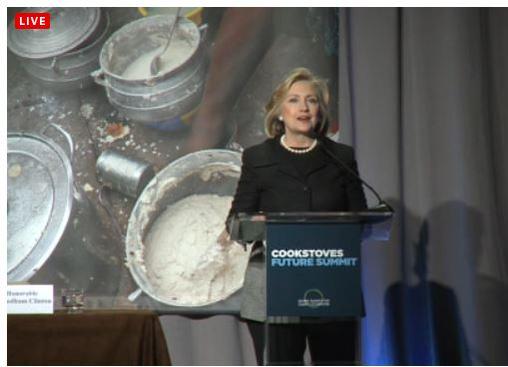(Cookstoves Future Summit, New York) — Despite four million annual deaths as a result of black carbon smoke inhalation and the other dangers of open fire cooking, cookstove initiatives have historically only received little attention in the world of aid and development. That changed with the advent of the Global Alliance for Clean Cookstoves in 2010. And at the final day of the first-ever Cookstoves Future Summit, it’s clear that governments, NGOs and the private sector are laying the foundation for a long term commitment to create sustainable markets for clean cookstoves.
According to the Global Alliance for Clean Cookstoves, 21% of global black carbon emissions can be attributed to cookstoves that use ‘dirty’ fuel sources like wood, coal, charcoal, dung, and crop wastes. Having a clean cookstove, however, can save one to two tons of carbon emissions per year. This does not just mean a healthier environment and healthier individuals but also represents a possible business opportunity and way to finance further cookstove development. The emissions reductions could be certified and then sold on the carbon market, meaning companies needing to emit more carbon could ‘buy’ the reduction as an offset to their own emissions. The Alliance does have a Carbon Finance Platform available but much more emphasis on this kind of ‘cross-cutting’ opportunity would likely get the private sector more interested in investing money into cookstove design, production, and distribution.
The most important financing focus today however has been on the different country commitments announced. It seems that aid and development agencies have made at least some progress in, as executive director of the Global Alliance for Clean Cookstoves Radha Mutiah noted, “mov[ing] [cookstoves] from the periphery of the developmental and environmental landscapes, to its very core.”
In all, over $400 million was pledged over the next three years. The UK and Norway announced they will commit $50 million and $40 million, respectively to various clean coookstove efforts. Ghana’s pledge of $5 million is far lower, but their focus on improving rural clean fuel distribution is critical because it’s an often-ignored infrastructure issue and something really only those governments of countries where ‘dirty’ cookstoves are prevalent themselves can address.
Raj Shah, Administrator of U.S. Agency for International Aid and Development (USAID) announced that the U.S. will commit $200 million to “develop, scale, and test groundbreaking solutions” for cleaner cookstoves. It is a large and wide-ranging commitment, but the most unique aspect is an additional partnership with the Swedish International Development Cooperation Agency (SIDA) among others. It will involve a $100 million “credit facility to develop and deploy household technologies” which will provide “subsidized lending to companies and small-scale enterprises” in the 52 countries where clean cookstoves, solar lamps, reusable water filters are most necessary.
As Shah noted this kind of financing mechanism “lays the groundwork for vibrant local economies” and seems the most practical one made today. With 3 billion people using cookstoves every day, often burning ‘dirty’ fuel, financing will need to be inclusive and address several issues at once — from environmental concerns to local economies and infrastructure. The solutions need to be as multi-faceted as the problem itself and the discussions taking place today at the conclusion of the Summit show that countries are are finally waking up to that fact.
